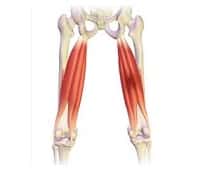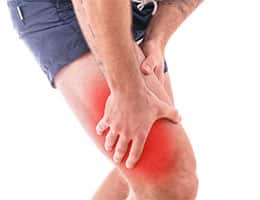 The hamstrings are the muscles found in the back of the leg . They arise in the hip bone called the ischium and insert into the fibula and tibia .
The hamstrings are the muscles found in the back of the leg . They arise in the hip bone called the ischium and insert into the fibula and tibia .
The sciatic nerve is responsible for the innervation of the hamstring muscles, which perform various functions in actions such as jumping and running. The hamstrings are knee flexors and hip extensors.
The semitendinosus , semimembranosus , and biceps femoris are some of the hamstring muscles. This muscle can suffer from various pathologies and injuries that cause difficulties when performing physical activities.
Inactivity, for example, can lead to shortening of the hamstrings, which begin to become stiff and make it difficult to develop certain movements or efforts. To avoid this problem, you must lead an active life, minimize muscle imbalances and have healthy nutrition .
Those who play sports that involve sudden starts and stops, such as tennis, basketball, and soccer, are at greater risk of suffering a hamstring injury due to stretching or strain. This can cause sharp pain, tenderness and swelling.
The most common treatment for hamstring injuries usually includes rest, compression bandages, ice packs, and the administration of pain relievers to combat pain and reduce inflammation. Physiotherapy to strengthen muscles is also recommended. In any case, a doctor is the professional who must analyze each case individually and indicate, according to his or her knowledge, the steps to follow.
It is worth mentioning that this muscle group that we call the hamstrings has considerable tendon strength . The injuries that occur most frequently in them are strains , muscle contractures and fiber breaks .
By hamstring strain we understand the elongation of the various tendon structures that make up the posterior muscles of the thigh. One of the most common characteristics of a hamstring strain is intense pain that occurs in the back of the thigh. This is a very common disorder in athletes, and is usually accompanied by tears in the biceps femoris area.
The possible causes of this problem are several; Let's look at some of them below: not warming up enough and adequately before doing physical exercise, especially if it is an intense session; weakening of the muscles that prevents achieving a good level of performance; tiredness due to lack of rest between moments of greatest activity .
 As mentioned in a previous paragraph, sports in which explosive movements occur increase the chances of suffering hamstring injuries. These movements can be a jump move, an attack on the ball or a sudden abrupt change of pace.
As mentioned in a previous paragraph, sports in which explosive movements occur increase the chances of suffering hamstring injuries. These movements can be a jump move, an attack on the ball or a sudden abrupt change of pace.
The severity of the hamstring strain is used to establish a classification:
* mild : a muscle fiber is stretched or broken, which causes slight discomfort to the subject although it does not cause a considerable loss of mobility. This injury can occur even without the person noticing it at the time, and in this case the discomfort arrives after a few hours;
* moderate : this is the rupture of certain fibers of muscles and tendons, which causes pain when palpating the affected area. It may be accompanied by slight swelling and some discomfort when walking or running. In these cases, the subject does usually interrupt their physical activity as soon as the injury occurs;
* serious : a hamstring strain considered serious is a really important fiber tear or tendon insertion. When palpating the area, a clear muscle defect is noticed and the ability to move is greatly reduced.
